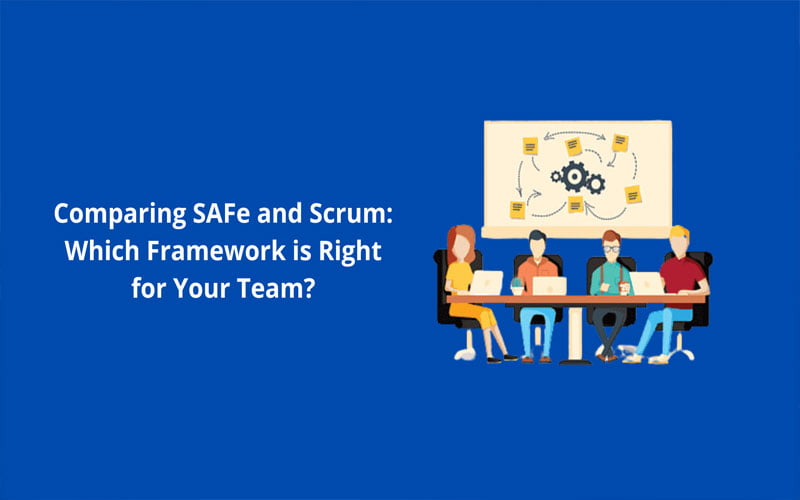Scrum and SAFe (Scaled Agile Framework) have emerged as the top competitors for guiding teams to success. The decision between these frameworks has become more important as firms try to provide clients with quicker and more effective service. Understanding their details is crucial whether you’re thinking about enrolling in a Scrum Course or investigating the SAFe approach. In this blog, we’ll look at the difference between SAFe vs Scrum, as well as their benefits and possible applicability to the unique needs of your team.
Understanding Scrum and SAFe
Before beginning the comparison, it is essential to understand the foundations of both systems. Scrum is a simple Agile methodology that encourages iterative and incremental progress. The utilization of small, cross-functional teams that perform sprints, or brief work cycles, is emphasized. By including roles like Product Owner, Scrum Master, and Development Team, the Scrum framework encourages collaboration and flexibility.
SAFe, on the other hand, emphasizes enterprises and important projects and has a more extensive approach. As its name implies, SAFe integrates several Agile teams into a single entity by extending Agile methodologies to the organizational level. It provides a systematic hierarchy of duties, starting at the team level and continuing up to the portfolio and enterprise levels, to ensure coherence and synchronization.
Benefits of Scrum
There are several advantages to consider if you’re looking at Agile techniques or thinking about attending a Scrum training. Teams are typically recognized for being able to respond swiftly to changes in demands thanks to their flexibility and simplicity. Sprints are iterative, which ensures regular opportunities for feedback and encourages ongoing development. Team members are empowered by Scrum’s emphasis on self-organization and teamwork, which also promotes a sense of ownership.
Benefits of SAFe
SAFe could be the answer for companies managing complex, multi-team projects. It provides a clear structure that facilitates team coordination and assures cooperation to accomplish common goals. Utilizing ideas from lean thinking, SAFe encourages efficiency and value delivery. Additionally, SAFe’s tiered responsibilities clearly define what each function is in charge of at various organizational levels.
SAFe Vs Scrum
There are several things to take into account while choosing between SAFe and Scrum:
- Smaller teams working on projects with clear scopes are where Scrum excels. The scaled approach of SAFe can be more appropriate if your organization consists of numerous teams working together on bigger tasks.
- SAFe’s tiered roles might offer the framework you want if your organization emphasizes a distinct hierarchy and centralized decision-making. However, Scrum’s team-centric approach may align more with your preferences if you want a flatter structure that promotes self-organization.
- Scrum’s shorter sprints and frequent feedback loops can efficiently handle changes in requirements if your projects frequently need to pivot swiftly. The organized methodology of SAFe may be more appropriate for projects with more predictable needs.
- Take into account the amount of training and change management your staff is prepared to engage in. SAFe’s complete structure may make adoption more labor-intensive, but Scrum’s simplicity could make adoption more rapid.
Conclusion
Your team’s particular environment and objectives will determine whether SAFe or Scrum is best. Scrum’s simplicity and iterative structure may be your best option if you’re starting a Scrum course to learn more about Agile concepts or have a smaller team devoted to adaptive development. On the other hand, SAFe may be the framework that provides order to the chaos in your organization’s big projects that include several teams and call for an organized way to scale Agile practices. Regardless of the framework you select, it’s critical to keep in mind that effective implementation depends not just on the framework itself but also on how well it meshes with the values, culture, and objectives of your team.











